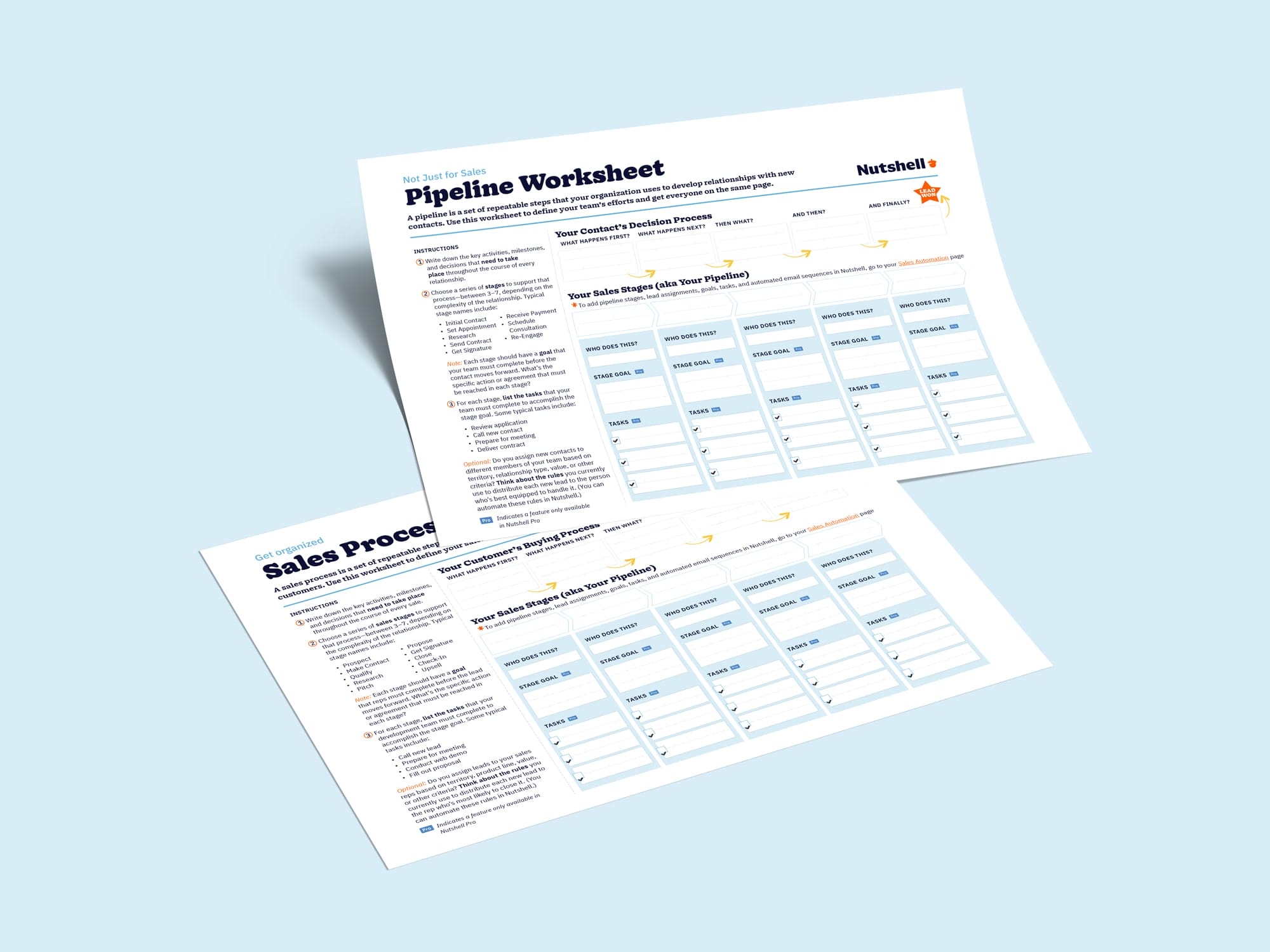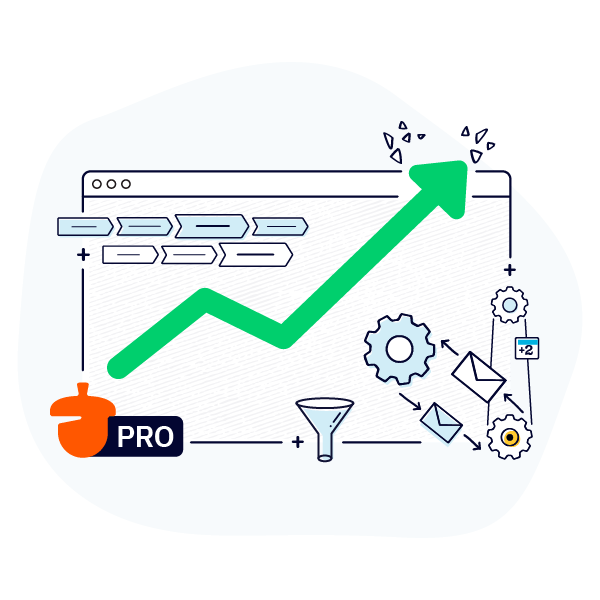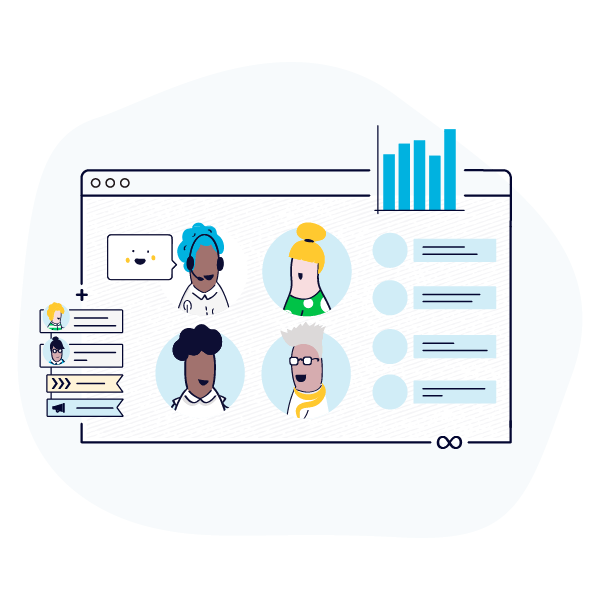
Using data to inform sales strategies is essential for today’s sales teams. A data-driven sales approach enables you to make better-informed decisions, stay on track toward goals, and ultimately, win more sales.
How can you use data when creating your sales strategy? Just keep reading to find out.
A data-driven sales strategy involves using concrete data and analytics, rather than intuition, to make informed decisions and guide every aspect of the sales process. By tracking key performance indicators (KPIs) and analyzing sales activities with tools like a CRM, teams can identify what’s working, optimize their tactics, and improve overall performance. This approach ultimately leads to more predictable revenue and provides managers with the specific insights needed for targeted, effective coaching.
A data-driven sales strategy uses relevant data to create a detailed sales plan describing how a sales team will approach the sales process and achieve its goals. It describes elements such as target markets, positioning, sales processes, techniques, and goals.
Data plays a vital role in modern sales strategies. Here are some of the benefits incorporating data into your sales plan can provide.
Leveraging data takes the guesswork out of defining your sales strategy. Of course, you’ll retain the human element in your sales plan, but data gives you something concrete on which to base decisions to ensure you’re moving in the right direction.
Reviewing data about your customers’ demographic, firmographic, behavioral, and other characteristics can help you determine your ideal customers. Analyzing this data can reveal trends in who is most likely to convert and become a loyal customer. You can then use customer segmentation to focus your outreach on these types of leads, increasing efficiency and win rates.
Another benefit of using data to inform your sales strategy is the ability to analyze your competition to inform your positioning and sales techniques. When you understand who your competitors are and how your product or service differs from theirs, you can use that information to enhance your sales messaging.
Looking back at past sales data can help you determine which elements of your strategies have worked best for you in the past. You can then use this information to optimize your sales tactics moving forward.
DOWNLOAD
Download our Sales Process Worksheet to learn how to outline the key steps your team needs to take for sales success.

A data-driven strategy significantly improves efficiency as it enables you to focus on your best opportunities and get results faster. For example, by analyzing the characteristics of the leads that are most likely to become loyal customers, you can focus your time on those leads.
Utilizing data helps you to be better prepared for challenges such as seasonal sales fluctuations, changes in the market, and increased competition. You can prepare for potential challenges using sales forecasts, market data, and competitor analysis to ensure you still hit your targets.
Data is also important for setting and tracking sales goals, which are a key part of a sales strategy. To choose realistic, meaningful goals, you’ll need to look back at past sales data and use sales forecasts, which help you predict demand and potential challenges. These data-backed goals can help you keep your strategy on track.
You’ll also need to choose which metrics you want to use to track your progress toward your goals. Keeping a close eye on these metrics helps keep your sales team on pace with targets and helps them make the most of their time.
Ultimately, the data-driven approach to sales strategy enables you to hit your goals and drive more revenue. It keeps you focused on the best opportunities and increases efficiency and effectiveness.
You can use various data types to inform your sales strategy. Here are some of the most valuable:
How do you get started with incorporating data into your sales strategy? Here are some essential steps to set yourself up for success.
A crucial first step in creating a data-driven sales strategy is setting goals and ensuring that the whole team is on the same page concerning them.
Setting goals helps you determine which data to track. By choosing which data to track based on the objectives that matter to you, you can better prevent data overwhelm.
It’s important for the whole team to understand the goals and why the data you’re tracking matters so that they can use that data more effectively.
To effectively use data for your sales strategy moving forward, you’ll need a reliable method for collecting and managing it. Here are some of the most efficient tools for gathering and managing your customer data:
Next, you’ll want to collect existing data so that you can use it as a basis for your strategy. The insights your existing data provides can be invaluable.
Depending on your business goals, the following sources of existing data may be helpful to your team:

Knowing the best action to take to move a lead closer to a sale is critical for developing a data-driven sales approach that works consistently. And certain kinds of data can help you develop an action-based sales strategy.
You can analyze many aspects of your sales strategy to determine your company’s ideal sales process, including pipelines, tactics, channels, messaging, and much more. You can also look at which sales reps closed the most leads and then train other sales reps to use the tactics your best-performing reps do.
For example, you might find that emphasizing certain features in your messaging or placing a sales call more quickly after a new lead entered your funnel led to increased wins.
To get the best results from using data to improve your sales techniques, review your data regularly and test new processes to find what performs best.
Establishing standards and processes for how your team manages data is also beneficial. This is called data governance and helps keep data accurate, improve organization, and promote privacy and security.
Learn everything you need to know about data management with Nutshell’s comprehensive Guide to Managing and Organizing Customer Data!

Ensure you establish a plan for tracking your sales data and your improvements over time. This will help you determine what’s working and what isn’t and enable you to refine your data processes and sales strategy continually.
Reporting and analytics tools can help you measure data like lead conversions, sales metrics, team productivity, lead volume and channel, and more. Artificial intelligence (AI) and machine learning can also help you interpret the data you collect and determine the prospects that are most valuable to your business.
Closely tracking your sales data enables you to spot potential opportunities to improve your strategy and try out new tactics. If you see a tactic is working particularly well, you can apply it to more aspects of your process. If a technique isn’t driving the expected results, you can test a new approach. Analyzing, testing, and improving your sales strategy enables you to continually improve your results.
Ready to do some sales planning and start incorporating more data into your sales strategy? A CRM that makes it easy to drive results is essential.
That’s where Nutshell comes in. Nutshell enables you to analyze your data with customizable dashboards and reports, automatically add data to your CRM through embeddable forms, automate your sales process, and more.
To learn more about how Nutshell can help you improve your sales strategy and drive growth for your business, start a free 14-day trial today.
You’ll see initial improvements within 4-6 weeks as you start tracking key metrics and adjusting tactics. However, expect 3-6 months for meaningful results like improved win rates and shorter sales cycles. Full transformation typically takes 12-18 months as data-driven practices become embedded in your team’s culture.
Start with these four core metrics: conversion rate (leads to customers), average deal size, sales cycle length, and win rate. These give you a complete picture of pipeline health without overwhelming your team. Once you’re comfortable, add activity metrics like calls made and meetings booked to understand what drives results.
Not at all. You can start with basic tools you likely already have—spreadsheets, email analytics, and free CRM trials. The key is consistent data collection and analysis. As you grow, invest in an affordable, all-in-one CRM like Nutshell that automates data capture and provides built-in reporting to scale your efforts efficiently.
The biggest mistake is tracking vanity metrics (like total leads or email opens) instead of metrics tied to revenue outcomes. Companies also fail to act on their data—they collect it but don’t adjust their strategy based on what it reveals. Focus on metrics that directly impact your bottom line and be willing to change course.
Start by making data accessible and easy to understand—use visual dashboards, not complex spreadsheets. Show your team how data helps them personally (like identifying their best-performing tactics). Celebrate wins driven by data insights and incorporate metrics into regular coaching conversations. Lead by example by using data in your own decision-making.
Nutshell has what you’re looking for.

Join 30,000+ other sales and marketing professionals. Subscribe to our Sell to Win newsletter!
